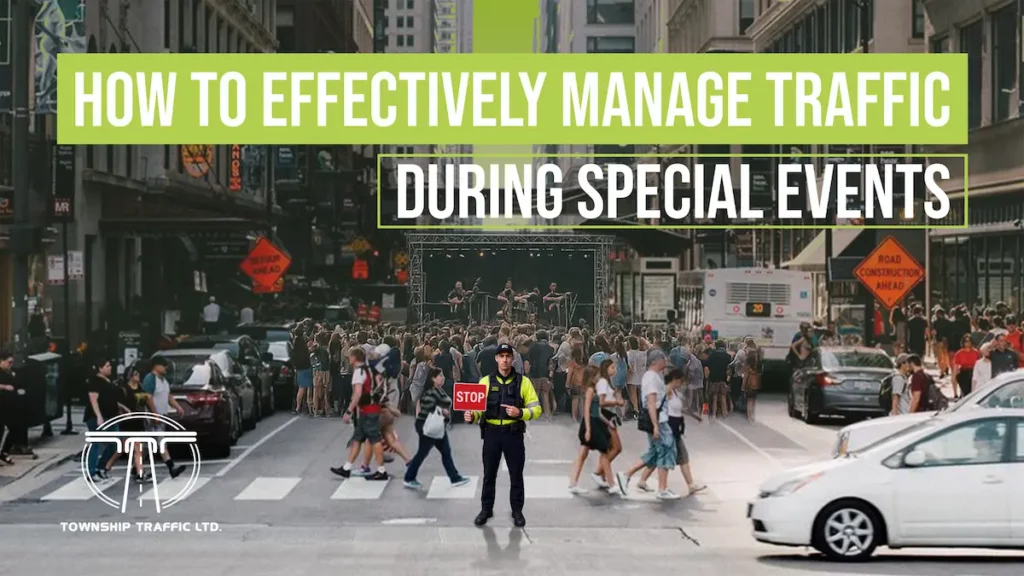Managing traffic during special events is one of the most crucial yet challenging tasks for event organizers and city planners. Whether it’s a sports game, a music festival, or a major public holiday celebration, controlling traffic can ensure that the event runs smoothly, attendees are safe, and the local community isn’t disrupted. In this blog, we’ll delve into effective traffic management strategies that can help make these events more successful, benefiting both organizers and the public.
Why Traffic Management Matters During Special Events
During any special event, traffic flow becomes more unpredictable due to the influx of attendees and the convergence of local commuters and visitors from out of town. Without proper traffic management, events can cause significant congestion, increased pollution, and public dissatisfaction. Effective management not only enhances the overall experience but also prevents accidents, minimizes delays, and ensures that emergency vehicles can access the event site when needed.
Key Strategies for Effective Traffic Management During Special Events
1. Plan Ahead: Early Traffic Management Measures
One of the best ways to avoid traffic chaos during an event is to plan. The traffic management team should start working on the logistics well before the event kicks off. This includes evaluating the potential impact on surrounding roads, figuring out alternate routes, and determining the number of vehicles expected. Having a robust traffic plan in place helps minimize the chances of delays and accidents.
Key elements to consider in advance:
- Road Closures: Determine which roads will need to be closed to facilitate the event. Inform local communities ahead of time.
- Signage: Use clear and visible signage to direct drivers to alternate routes.
- Traffic Flow: Establish entry and exit points for attendees and vehicles to streamline traffic.
2. Use of Technology for Real-Time Traffic Monitoring
Advancements in technology have transformed traffic management during special events. Tools such as smart traffic lights, real-time traffic apps, and digital signs enable traffic control centers to monitor the flow and adjust signals dynamically in response to demand.
Key technologies to incorporate:
- Smart Traffic Signals: These can adjust their timing based on current traffic flow to reduce congestion.
- Real-Time Traffic Apps: Apps like Google Maps and Waze can guide drivers around congested areas, offering real-time updates on the fastest routes.
- CCTV Cameras: These help monitor traffic in real time and alert authorities about any incidents or obstructions on the roads.
3. Traffic Control Personnel
Well-trained traffic control personnel are essential to maintaining order and safety during large events. Having traffic marshals at key intersections can help ensure the smooth movement of vehicles. These marshals can guide drivers, manage traffic queues, and prevent accidents.
Traffic controllers should be stationed at:
- High-Traffic Junctions: Key intersections near the event venue.
- Parking Areas: To manage vehicle flow in and out of parking lots.
- Pedestrian Crossings: Ensure safe crossing for pedestrians, especially if they are walking to the event from nearby transport hubs.
4. Public Transportation Alternatives
Encouraging attendees to use public transportation can significantly reduce the number of vehicles on the roads. Offering shuttle services from key transport hubs to the event site or providing discounts for public transit can help alleviate pressure on roads and parking areas.
Benefits of promoting public transportation:
- Reduces Congestion: Fewer cars on the road mean less congestion and smoother traffic flow.
- Environmental Benefits: Reduces carbon emissions and promotes sustainable transport options.
- Cost-Effective: Attendees may prefer public transport as it’s often more affordable and convenient compared to driving.
5. Managing Emergency Vehicle Access
Ensuring that emergency vehicles can access the event site at any given moment is essential. Special event planners must identify and maintain clear routes for emergency services, even during peak traffic times. These routes should be free from any obstructions and clearly marked to avoid delays in case of an emergency.
Post-Event Traffic Management
Once the event is over, managing the outgoing traffic is just as important as managing the inflow. Post-event traffic often leads to gridlocks if not handled efficiently. Here are some post-event strategies:
- Staggered Exits: Direct attendees to leave in phases based on their location in the venue or their parking area. This prevents a sudden rush of cars.
- Clear Communication: Use digital signage and social media to inform attendees about the best routes to take after the event.
- Road Clearance: Ensure that roads are quickly cleared of any obstructions, such as parked cars or debris, so that normal traffic can resume smoothly.
Conclusion
Managing traffic during special events is a critical task that requires thoughtful planning, effective use of technology, and collaboration between event organizers, local authorities, and traffic management companies. If you’re organizing a major event and want to ensure seamless traffic management, it’s essential to work with experienced traffic control professionals who understand the complexities of crowd management, road safety, and logistical planning.
At Township Traffic, we specialize in providing top-notch traffic management and control services for special events in the region. Our experienced team works tirelessly to ensure smooth, safe, and efficient traffic flow, enabling you to focus on hosting a successful event without worrying about traffic disruptions. Contact us today at Township Traffic to learn more about how we can help make your next event a hit.

